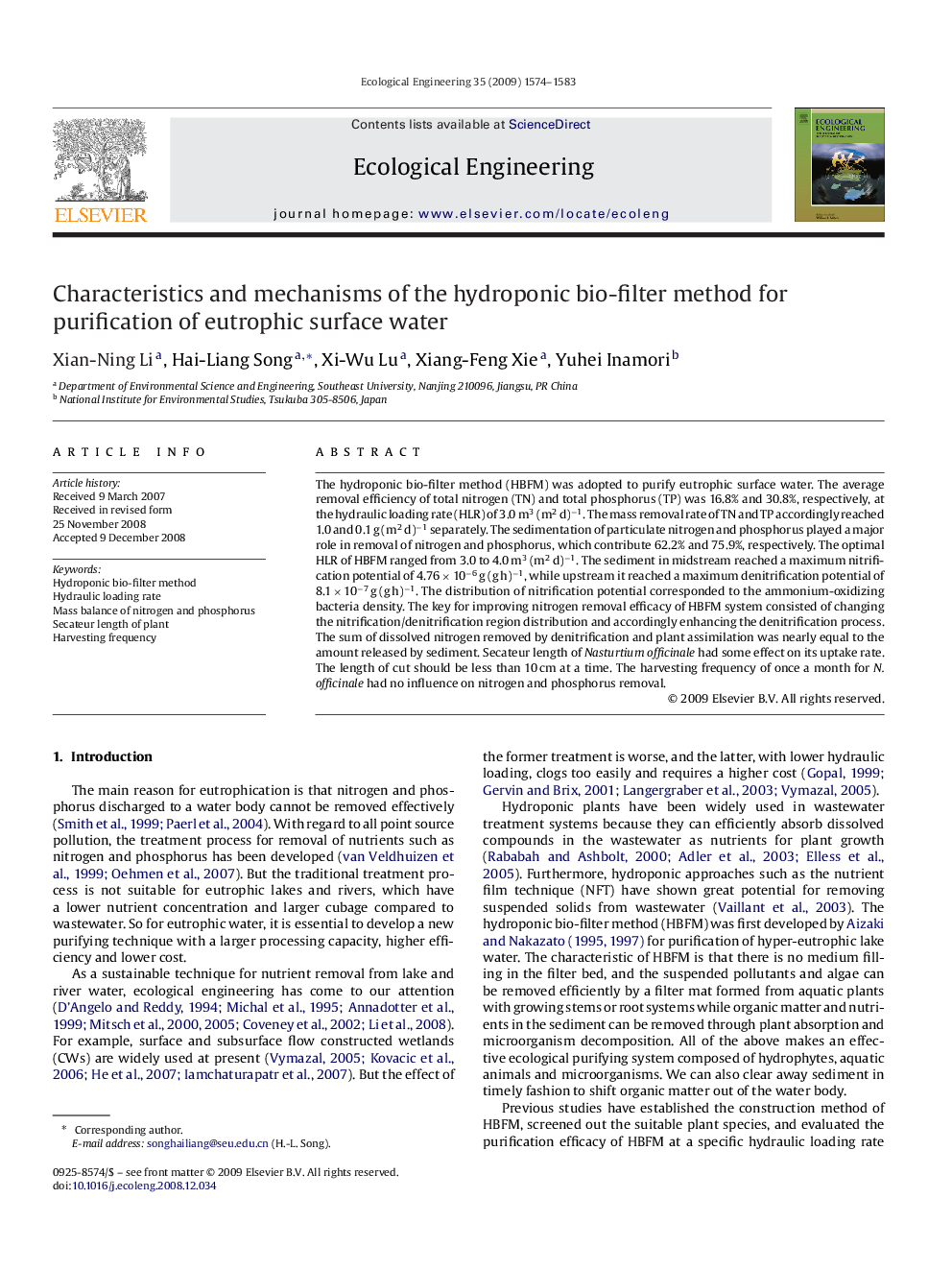| Article ID | Journal | Published Year | Pages | File Type |
|---|---|---|---|---|
| 4390500 | Ecological Engineering | 2009 | 10 Pages |
The hydroponic bio-filter method (HBFM) was adopted to purify eutrophic surface water. The average removal efficiency of total nitrogen (TN) and total phosphorus (TP) was 16.8% and 30.8%, respectively, at the hydraulic loading rate (HLR) of 3.0 m3 (m2 d)−1. The mass removal rate of TN and TP accordingly reached 1.0 and 0.1 g (m2 d)−1 separately. The sedimentation of particulate nitrogen and phosphorus played a major role in removal of nitrogen and phosphorus, which contribute 62.2% and 75.9%, respectively. The optimal HLR of HBFM ranged from 3.0 to 4.0 m3 (m2 d)−1. The sediment in midstream reached a maximum nitrification potential of 4.76 × 10−6 g (g h)−1, while upstream it reached a maximum denitrification potential of 8.1 × 10−7 g (g h)−1. The distribution of nitrification potential corresponded to the ammonium-oxidizing bacteria density. The key for improving nitrogen removal efficacy of HBFM system consisted of changing the nitrification/denitrification region distribution and accordingly enhancing the denitrification process. The sum of dissolved nitrogen removed by denitrification and plant assimilation was nearly equal to the amount released by sediment. Secateur length of Nasturtium officinale had some effect on its uptake rate. The length of cut should be less than 10 cm at a time. The harvesting frequency of once a month for N. officinale had no influence on nitrogen and phosphorus removal.
